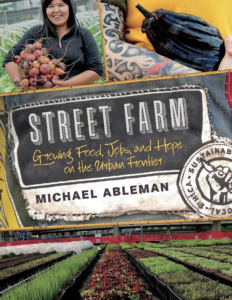 Excerpted from “Street Farm: Growing Food, Jobs, and Hope on the Urban Frontier” by Michael Ableman (Chelsea Green, 2016).
Excerpted from “Street Farm: Growing Food, Jobs, and Hope on the Urban Frontier” by Michael Ableman (Chelsea Green, 2016).
My work in Watts and my recent urban farming in Vancouver have left me with few illusions about the challenges we face in our effort to help grow these communities. I’ve shared my experiences with Seann; he’s done the same for me. And we sometimes encounter the reality that people are no easier to recover than the land buried under layers of pavement. Ours remains an imperfect endeavor.